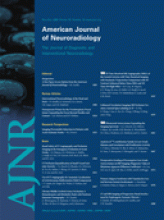We read the interesting recent article by Kato et al1 concerning the assessment of glioma metabolic activity by positron-emission tomography (PET).1 The authors evaluated the type, grade, and proliferation index of 95 primary glioma cases by simultaneous [18F] fluorodeoxyglucose (18F-FDG), 11C-methionine (MET) and 11C-choline (CHO) PET. Their results in astrocytic tumors showed a significant correlation between all tracer uptake and both tumor grade and proliferation activity (as assessed by the Ki-67/Mib-1 immunohistologic index). Nonetheless, in oligodendrogliomas and in mixed oligoastrocytic tumors, only CHO-PET demonstrated a significant correlation between tracer uptake and tumor grade. As regards visual image evaluation, MET-PET was proved superior due to its insignificant uptake by normal brain tissue.1
The proliferation potential of gliomas is important for patient management and has significant prognostic implications. Its assessment currently requires tissue sampling through biopsy or over the course of a surgical procedure. A major objective of nuclear medicine is, therefore, the development of new radio-labeled tracers to evaluate, noninvasively, tumor proliferation in vivo. Aside from PET, which is relatively expensive and not widely available, single-photon emission CT (SPECT) with various radiotracers has also been evaluated. Thallium-201 (201Tl) was one of the first tracers used. Technetium Tc99m-labeled compounds have also been studied; they were proved advantageous over 201Tl, due to the 140 keV γ-ray energy, higher photon flux, higher spatial resolution, less radiation burden to the patient, and excellent availability.
We are currently investigating the brain tumor imaging properties of Tc99m tetrofosmin (Tc99m-TF), a lipophilic diphosphine routinely used for myocardial perfusion imaging, which also displays tumor-seeking properties. Its uptake mechanism depends mainly on blood-brain-barrier (BBB) disruption, regional blood flow, and cell membrane integrity, thus reflecting on cellular metabolic status and viability. Given that Tc99m-TF does not cross the intact BBB, every brain lesion disrupting BBB and selectively accumulating the radiotracer can be easily identified against negligible tracer uptake in normal background. We have recently described a strong correlation between Tc99m-TF uptake and cellular proliferation, as assessed by the Ki-67 index and by flow cytometry analysis, in both gliomas and meningiomas.2,3 We also found that Tc99m-TF can reliably distinguish between glioma recurrence and radiation necrosis.4 This correlation between Tc99m-TF uptake and glioma proliferation allows us to consider this initial evidence as adequate to substantiate further research regarding the clinical utility of Tc99m-TF SPECT. The wider availability and favorable cost of this imaging technique, compared with PET, also constitute a considerable advantage.
- Copyright © American Society of Neuroradiology












